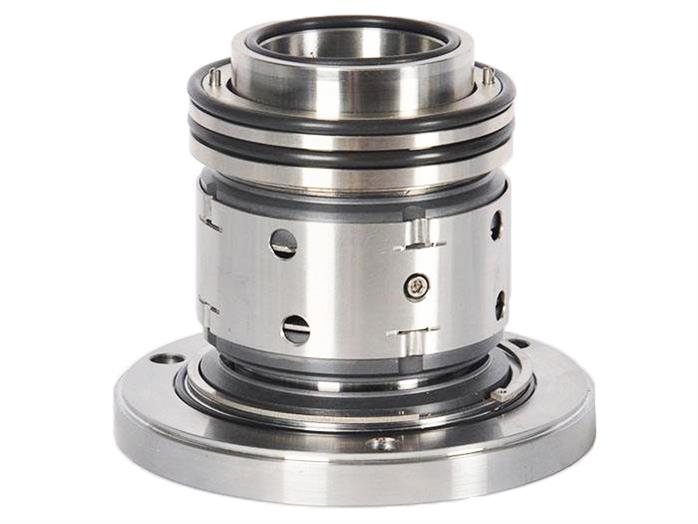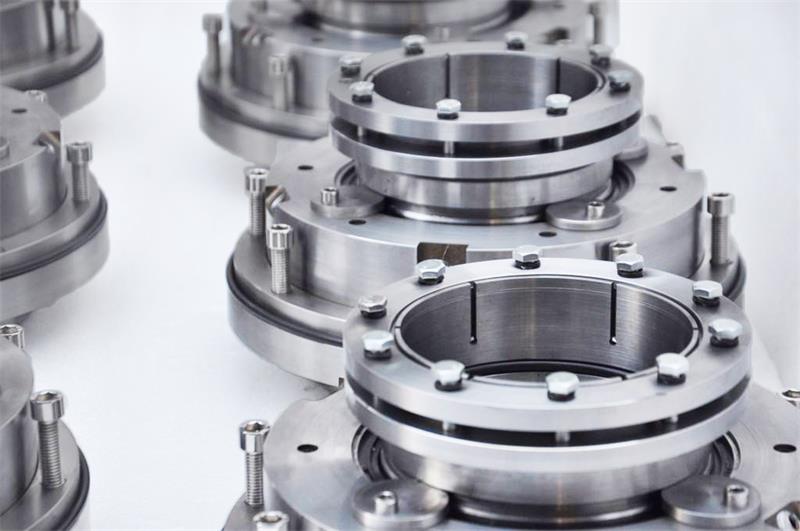Learn - Dec. 14, 2023

Since the age of steam, coal energy has meant industrial energy. Coal consumption remains at the top of mineral energy till now, and coal-fired power generation would remain one of the main forms of power generation. Coal-fired power generation produces large amounts of sulfur dioxide and nitride emissions, which causes air pollution and aggravate acid rain. The talk is no more than a platitude. It seems that thermal power plant is synonymous with air pollution. It has been quoted out of context,and it is very unfair. So many people in order to ensure the balance between energy supply and environmental protection, whose have been making unremitting efforts, after decades of development, thermal power stations in the flue gas desulfurization technology have been quite excellent, and sulfur dioxide and nitrogen oxide emissions have been in line with environmental requirements. The impact of coal-fired power generation on air quality has become increasingly small.
We have already made coal-fired power generation more Eco-friendly.
The key technology is flue gas desulfurization. The FGD method of coal-fired power generation is mainly "wet limestone-gypsum flue gas desulphurization". The desulfurizing absorbent is limestone slurry or lime slurry, which reacts with sulfur dioxide in the flue gas in the absorber, and the sulfur dioxide is removed, and the final reactant is gypsum(CaSO4▪2H2O).
In the process of flue gas desulfurization, the FGD circulating pumps transport the limestone slurry to the absorption tower, and the evenly sprayed slurry is in countercurrent contact with the burning smoke, reaction occurs, and sulfur dioxide is absorbed. In this process, SO2, SO3, HCL, HF and other polluting gases are also removed at the same time, and finally, gypsum is produced after oxidation and dehydration. Limestone slurry is highly corrosive and contains small, abrasive solid particles. Dealing with this severe medium is a great challenge for the circulating pump.


We are committed to the production, improvement, renewal of desulfurization pumps. Excellent desulfurization pumps from us contribute to give longer service life and less energy consumption for equipment, and save more procurement costs in thermal power plants.
The desulfurization pump has a longer service life depend on the performance of abrasion and corrosion.
① Ceramic lining desulfurization pumps perfectly solve the problems of abrasion and corrosion. A silicon carbide lining mixed flow pump has smooth flow channel which is better for hydraulic performance.
② Metal desulfurization pumps have much more type and specifications. Materials in contact with the pumped fluid could be selected from high-chromium alloy, A49, Cr30A.
Limestone slurry desulfurization process
The FGD consists of the following subsystems.
1. Chimney flue system
2. Sulfur dioxide absorption system ( desulfurization pump )
3. Limestone slurry preparation and supply system ( heavy duty slurry pump )
4. Gypsum dewatering system
5. Water supply system ( horizontal split-case multistage pump , segmental multistage centrifugal pump )
6. Drainage system ( centrifugal pump )
7. Compressed air system ( water ring vacuum pump )
8. Wastewater treatment system ( large capacity centrifugal pump )

The main equipment in the sulfur dioxide absorption system includes:
1. Absorption tower
2. limestone slurry sump in absorption tower
3. desulfurization pump for circulating limestone slurry
4. Absorber mixer
5. Oxidized air spray gun
6. Slurry spray layer
7. Mist eliminator and its flushing system
Sulfur dioxide absorption system
Sulfur dioxide absorption system is the core process of sulfur dioxide removal process. The flue gas produced after coal combustion is diverted to the FGD system, after cooling, and enters the absorption tower for desulfurization reaction. The flue gas flows from the bottom up and comes into contact with the limestone slurry sprayed down. The sulfur dioxide(SO2,SO3) in the flue gas is washed by the absorbed slurry and reacts with the calcium carbonate (CaCO3)in the slurry to eventually form gypsum slurry, which becomes solid gypsum(CaSO4▪2 H2O) after dehydration treatment.
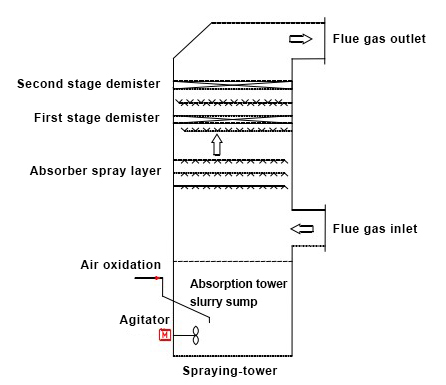
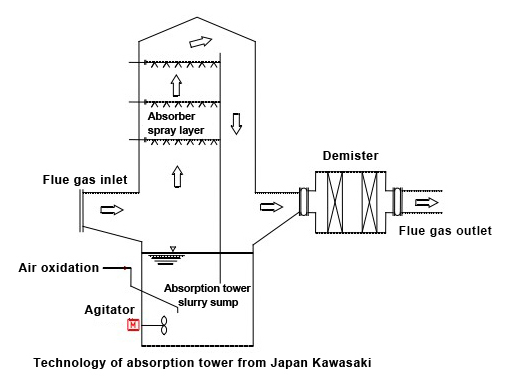
We have cooperated and communicated with customers of thermal power plants as long as decades, and we find that they collectively refer to the main equipment pump in the sulfur dioxide absorption tower as a slurry circulation pump. It is the customary practice in thermal power generation industry. In fact, there are several types of pumps in the absorption tower, and there are great differences in the appearance and function of “ slurry circulation pump”. Large circulation pump, that is, we call desulphurization circulation pump precisely, which belongs to corrosion and abrasion resistance horizontal mixed-flow pump. The desulfurization pump corresponds to the spray layer, and each spray layer corresponds to a desulfurization pump. Typically, there are three to six large capacity desulfurization pumps per absorber tower. Small capacity slurry pumps, including limestone slurry pumps, gypsum drainage pumps, etc., are more in number and are corrosion-resistant and wear-resistant slurry pumps. In addition to slurry pumps, there is also necessary to be equipped with water supply pumps.
It is most valuable to provide high efficiency desulfurization pumps that own premium performance of corrosion resistance and wear resistance. FGD pumps delivery medium containing limestone and gypsum particles, which content of chloride ions in the medium is CL-=0-60000mg/L, PH=4.5-7.0 The concentration of limestone and gypsum particles is 20%-30%, and the highest could reach 60%. The hard particles contained in the medium cause wear and corrosion of the flow parts of the desulfurization pump is troublesome. It is no exaggeration to say,corroded or worn impellers are a nightmare for thermal power plants and pump manufacturers.
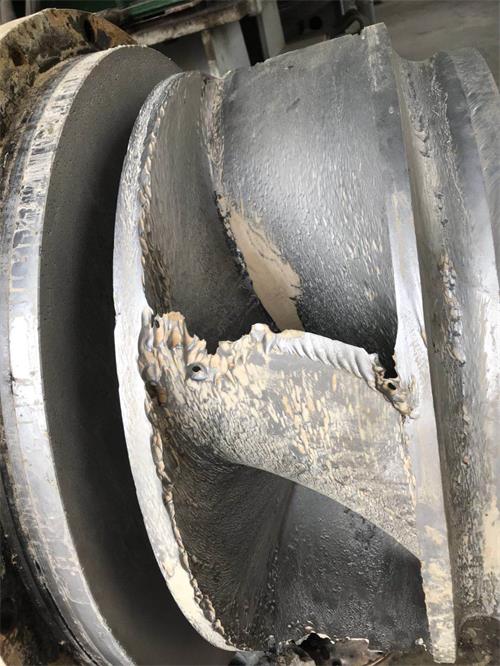
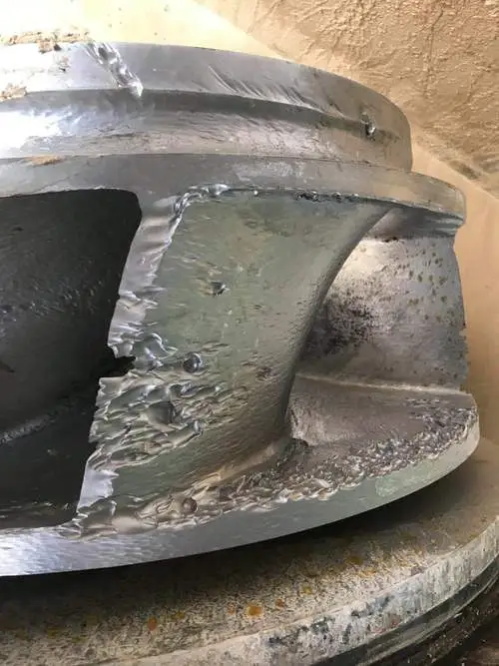
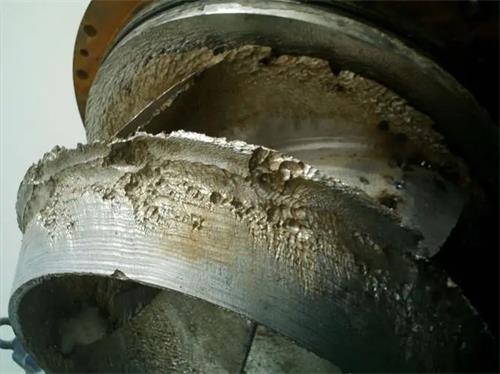
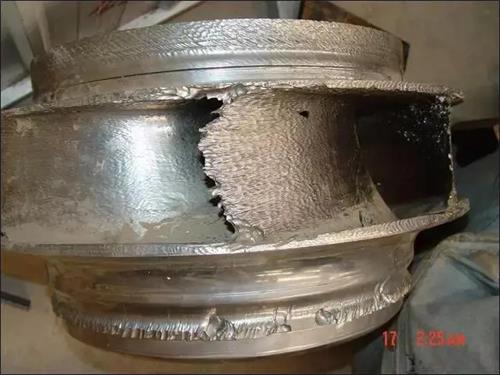

To overcome this difficulty, the purchase of desulfurization pumps requires the assistance of professional sales and engineers is recommended. In recently years, more and more feedback from end users indicate that silicon carbide lined ceramic desulfurization pumps are proven superior performance of corrosion resistance and wear resistance, which service life far exceed expectations.
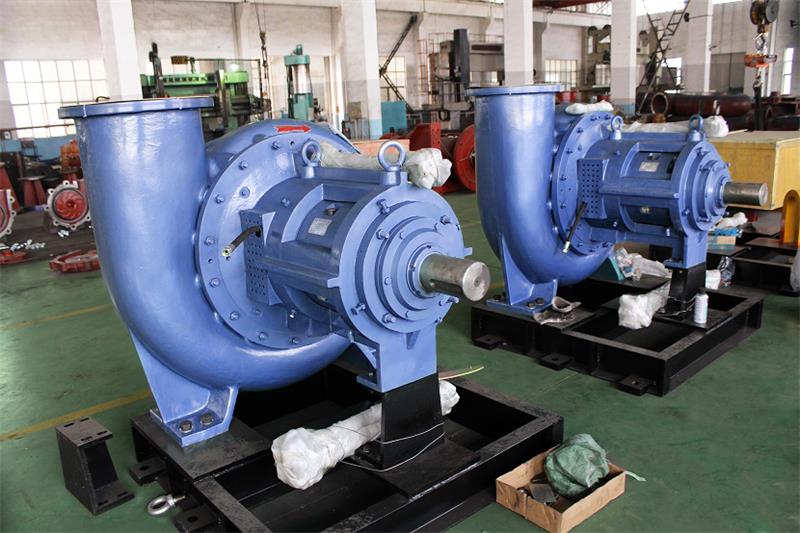

Reliable and long cycle operation requires a proven pump design and optimized sealing arrangements.
An impeller is the key component of a desulfurization mixed flow pump. Impellers are designed as semi-open impeller, and the design method of blade extremely twisted structure is adopted to make the flow line of the desulfurization pump blade more in line with the flow of the fluid in the flow field, improve the hydraulic performance and provide high efficiency. The blade is appropriately extended to the inlet end of the pump, and the extended part is equivalent to adding a racemate device at the inlet of the pump, which reduces the swirl loss at the inlet of the pump and reduce noise.

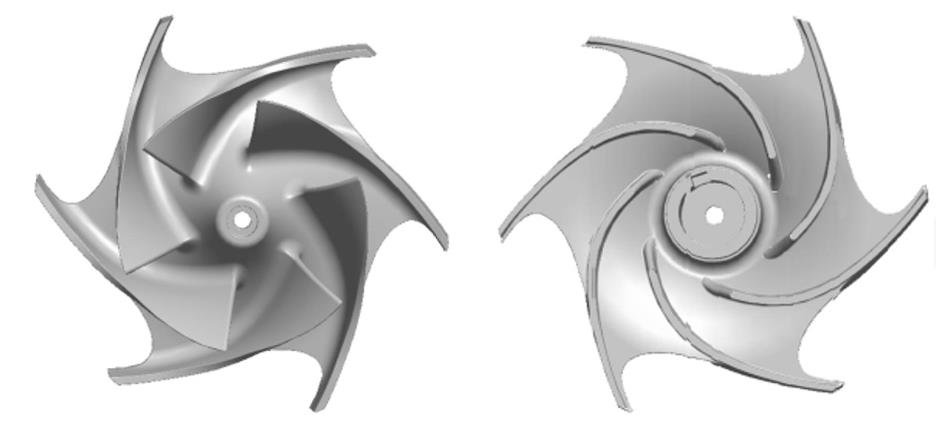
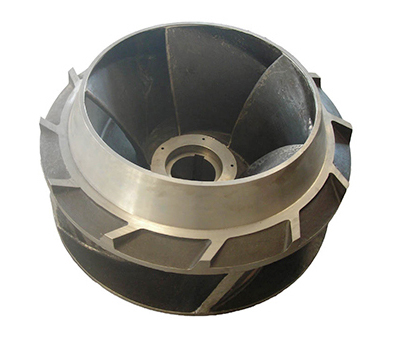
The desulfurization pump is equipped with a double-end non-packaged mechanical seal, flush plan 54, with external flushing water (the pressure is greater than the pressure of the sealing medium), the sealing medium and the flushing water jointly provide lubrication and flushing for the sealing ring at the medium end, and the atmospheric sealing ring provides lubrication and cooling by the flushing water. The two sets of sealing rings share a set of small springs, which are fixed by a set of holes on the spring seat. When the spring moves forward and back along the shaft in the holes, the elasticity is not affected, providing stable and continuous compensation force for the two sets of sealing rings. This mechanical seal could operate normally with an installation error of ±5mm.
